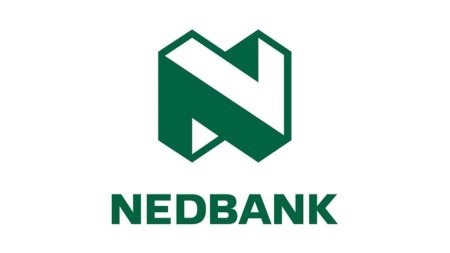John Loos of FNB Home Loans discusses how to interpret and understand house price inflation, average house price levels and factors affecting affordability.
HOUSE PRICE INFLATION
I have had a number of calls lately querying the inflation rates of the major
house price indices. I am normally asked whether I believe, as both the Absa and
Lightstone National House Price Indices indicate, that house prices are still
rising. The answer is yes. While no house price index is a 100% reflection of
real life, I do believe that the trends that these indices show, i.e. relatively
solid but nevertheless slowing house price inflation, are correct.
How can this be, some have asked, when most sellers are having to drop their
price? Doesn't that amount to house price deflation? Not necessarily. Take a
look at the FNB Property Barometer graph below, indicating that 75% of sellers
sell at less than the asking price. This percentage has increased over time,
supporting the view that the residential market is weakening. But it is totally
incorrect to compare the asking price with the ultimate selling price. Sellers
should always be pushing for the best possible price, and buyers for the lowest
possible price. Depending on market conditions, supply relative to demand, the
ultimate price of sale could swing nearer to the asking price of the seller (in
times of market strength), or nearer to the bidding price of the buyer (in times
of market weakness). But even in times of extreme market strength, many sellers
will not achieve their asking price.
The graph below shows that even at the height of market strength, i.e. the
beginning of 2004, just after 550 basis points worth of interest rate cuts
within 6 months by the SARB, 30% of sellers weren't getting their asking price.
Does this mean that 30% of houses sold saw price deflation? Not a chance. If 1%
saw deflation I'd be surprised. House price indices don't measure asking price
versus selling price. They attempt to measure actual prices now with actual
prices in previous periods, a very different matter.
Nevertheless, many will say that there is still no way that house prices in
their area can possibly be inflating by 14.5% or higher at around 19%
year-on-year in the case of the Lightstone repeat sales index.
This is absolutely correct in most cases. These national price indices are not
attempting to tell you what your particular property, or those in your area, are
inflating at. They provide indications of national aggregates, and we know that
areas and regions differ vastly.
Just take a look at the April inflation rates per province as provided by
Lightstone and one sees major differences. House price inflation for the Western
Cape was estimated as low as 11.2% up on prices a year ago, well-below the
national average of 18.4%. In contrast, Limpopo average house price inflation
was running at 27%, with some other smaller inland provinces, most notably North
West (25%) and Free State (26.8%) also recording inflation well-above 20%.
Gauteng, being the largest market, is the major driver of the national average,
and its inflation rate at 16.6% was close to the national average of 18.4%.
But I live in Gauteng, you may say, and my area is not seeing near to that sort
of inflation. Chances are you live in one of the higher value areas, which
admittedly seem to be taking more strain than lower priced housing due to
mounting affordability issues. One can see by the graph below that on a national
basis, there is a vast difference between areas based on price ranges.
Lightstone calculates four area value bands. Areas with an average house price
in excess of R1.5 million as at December 2006, known as the luxury band, have
experienced average house price inflation of 13.3%. This may be lower when one
moves up the price range within this value band. The High-value band, areas with
average price levels between R1.5 million and R700 000, fared similarly, with
April house price inflation of 11.9%. The bands dragging the national average
inflation upward were the Mid-value band (R700,000-R250,000 average price areas)
with inflation averaging 22.5%, and the Affordable band (areas with average
prices of R250,000 and below) averaging 39.8%.
Remember that these value band inflation rates will also differ from region to
region.
The difference in average price inflation between the coastal strip versus
non-coastal property also differs significantly. Lightstone's Coastal Index,
which includes only property within 500 metres from the coastline, showed April
year-on-year price inflation of only 10.6%, while the Non-Coastal Index
(everything else) inflated by 19%.
The coastal market can be expected to be more cyclical because of a large
proportion of non-essential holiday property. In adverse times of rising
interest rates, many potential buyers from inland regions can hold back on the
purchase in the coastal strip while awaiting better times.
Even the regional and value band indices mentioned above are far too aggregated
to reflect the price inflation or deflation in a particular suburb. Suburban
trends can be driven by micro-issues such as a "bad crowd" beginning to move in
(or out) of the area, mounting traffic congestion, a new wave of crime or a
major new commercial development, to name but a few potential factors.
In short, therefore, use regional and value band indices as reflections of
broader market trends, driven by broader market forces, but don't expect them
always to correlate well to your particular suburb. Can one rely on certain
price inflation estimates for suburbs (one does come across them from time to
time)? I would treat such estimates with caution as more often than not the
sample size for suburban areas is too small to be statistically reliable.
HOUSE PRICE LEVELS AND AFFORDABILITY
Another question that frequently crops up regards average house price levels.
Some estimates of the average South African house price are not far from R
1million. This leads some to draw the conclusion that very few South Africans,
and indeed far less than 10 years ago, can afford a house. This is a big
mistake. Since the beginning of the property boom in 1999, hundreds of thousands
of new residential units have been added to the country's total housing stock
and they are by-and-large being filled up. In other words, far more people are
housed in proper houses today than 7 years ago, although admittedly there are
still too many people who are homeless or living in informal settlements.
If less and less people could afford formal houses, prices would drop due to
lack of demand. Perhaps we can put the blame on foreign buyers? Highly unlikely,
given that they remain such a small part of the country's economy and housing
market (although having grown in numbers off a very low base).
So what's the catch? How do so many more people afford houses that are so much
less affordable than a few years ago?
Firstly, stating the obvious, any average house price estimate is exactly what
it says, an average. Even if the estimate is near to R1 million, the number of
houses that make up the sample for the estimate range from far lower-priced
houses than the average price to far higher.
However, there's a further catch. The price indices are based on the stock that
gets traded each month. This is different to taking the total housing stock that
exists and estimating its value each month (a near impossible task). Therefore,
the composition of the stock traded is very important, and what has
traditionally been the case is that middle-to-higher income groups tend to be
more mobile. This means that, on average, they move home far more often than the
poor, and obviously sell their houses far more often as a result. The result is
that average house price estimates are generally skewed towards the higher end
of the market because that is where the turnover is far greater.
Some individuals have argued that the median house price is therefore a good
indicator of average price, because it takes the house priced at the middle of
the sample, thus giving a more equal weighting to high and low value houses.
This is a fallacy, as determining the median house price also depends on the
composition of the sample of houses traded, and is thus subject to the same
problem of too few houses being trade at the low end.
To put some numbers to what I am saying, I have taken Lightstone Risk
Management's estimates of residential property traded by individuals in South
Africa's largest metro areas between January 2005 and February 2007, i.e. a
period just over 2 years.
Taking the estimated number of units purchased by individuals in each area value
band, expressed as a percentage of total stock owned by individuals in the
corresponding value band, one sees that the affordable segment has a very low
rate of turnover, while simultaneously being a large proportion of total housing
stock (in Mandela Bay the affordable areas account for an estimated 57.6% of
total housing stock). In any price index based on properties traded, it stands
to reason, therefore, that the low end of the market will be weighted
disproportionately low relative to its size in terms of number of units.
Even amongst the middle and upper class, one can see differences in turnover by
region, with Mandela Bay, for instance, having significantly lower turnovers
than Johannesburg. This may therefore also skew a national index price level in
favour of more highly-traded regions.
Does this render house price indices useless? Absolutely not. They are of great
value as indicators of trends in the housing market. It is not so much the
indices that are misleading as it is the interpretation thereof. It is important
to realise that no data, whether it be house price indices or consumer price
inflation data, 100% accurately reflects real life for everyone.
So how bad is affordability? What's the catch? How is it possible that prices
have risen so dramatically over recent years and still there are more people
affording a housing stock increasing in size?
Important to realise is that the cumulative average wage increase in South
Africa from end-1998 to end-2006 amounted to around 80%, according to the SARB
remuneration index. In other words, all other things equal, houses prices could
have risen by 80% over the period without affordability being in any way
negatively impacted.
The other big determinant of affordability, besides house prices, is interest
rates. The average prime rate in the final quarter of 1998 was 23.3%. By
end-2006 this rate was 12.2%. In percentage change terms, this represents a 48%
decline on the final quarter of 1998.
The abovementioned two factors have partly offset the negative impact of higher
house prices that, using the Absa Index, rose cumulatively by 280% from end-1998
to end-2006.
The graph below shows the net effect of the changes in the 3 factors that I have
mentioned above, namely remuneration, interest rates and house prices. The
average house price/average remuneration ratio rose by 111% from end-1998 to
end-2006. With most people mentally focused on price rather than repayment
value, despite repayment value being more important for many of us in this
credit-driven market, the sharp rise in the price/income ratio index is perhaps
what causes the alarm.
However, the residential market is very much credit-driven, and it is probably
the second ratio, i.e. the repayment value of a 100% loan on an average-priced
house at prime rate, that is the more important of the two ratios. This index
has risen by a mere 19% from end-1998 to end-2006. Admittedly interest rates
were still high at end-1998, so from other bases the rise is more extreme, i.e.
from end-2007 to end-2006 it rose by 32%, and from end-2000 it rose by 65%.
Therefore, housing affordability has deteriorated from the dirt cheap levels of
the late-1990s. But combining the effects of rising wages and the decline in
interest rates post-1998, this deterioration looks far less severe than when one
simply looks at total price inflation over the boom years.
In addition, looking further back on the graph to the early-1970s, a period
before the general economic and housing market rot set in, we see that both
affordability indices were still lower at the end of last year than back then.
Admittedly the 1970s are probably not quite comparable with today. In those days
more people probably had housing subsidies. Taxes were structured differently,
and spending patterns also differed. However, the "dirt cheap" late-80s/90s are
also not quite comparable with the present situation. Lower economic growth and
job creation in the previous two decades, accompanied by high and volatile
interest rates, was not the recipe for a strong housing market.
Currently, not only are we returning to the stronger economic growth levels
of the 60s/early-1970s, as well as the lower inflation and interest rates, but
urban land scarcity is also becoming a real issue causing upward pressure on
land values. As a result, I believe that house prices, too, are merely
normalising to reflect the improved fundamentals.
If land scarcity weren't mounting, I suggest that the normalisation of property
prices would probably be complete. However, this factor suggests to me
significantly higher prices in the years to come. How will households continue
to afford the expected rising values? Continued densification of living, which
in short could be termed paying more money for less house. It isn't something
that I find very appealing, being a South African who is used to space. But what
we want and what is reality, unfortunately, often isn't the same thing.



